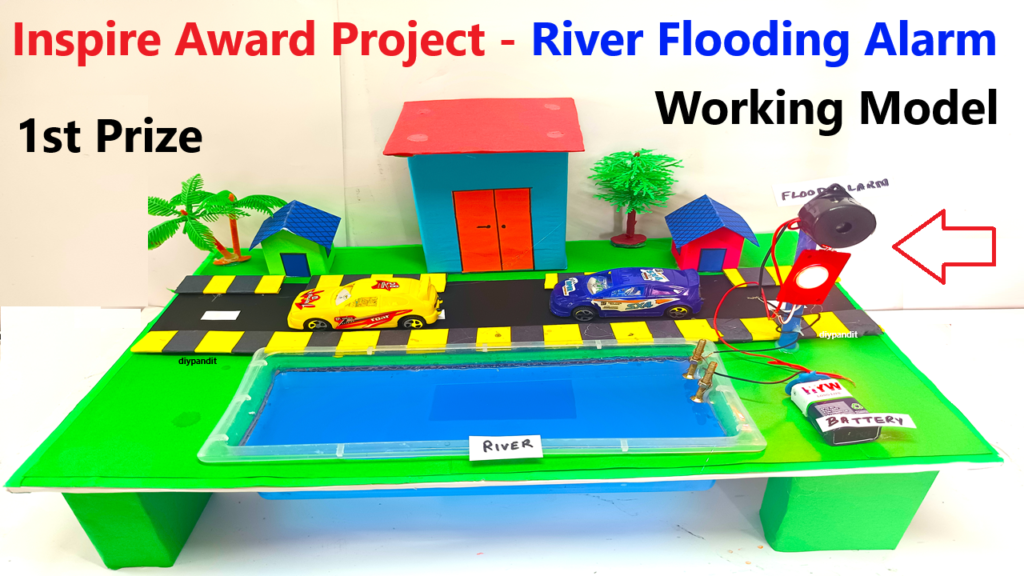A river flooding alarm is a device that alerts people when water levels rise dangerously high, indicating the risk of flooding. This working model uses simple components like nuts, bolts, a 9V battery, and a buzzer to demonstrate an early warning system. It is set up with a plastic tray to simulate a river and nearby houses or colonies.

Components of the Model
- Nuts and Bolts: Act as water-level sensors.
- Plastic Tray: Represents the river and surrounding area.
- Houses/Colony Models: Small structures made of cardboard or similar material to depict human settlements.
- 9V Battery: Powers the circuit.
- Buzzer: Emits a loud sound when flooding is detected.
- Connecting Wires: Links all components to complete the circuit.
How It Works
- Place the nuts and bolts at a specific height in the plastic tray to act as water-level sensors.
- Connect the nuts and bolts to the circuit, ensuring they are part of the conductive path.
- Gradually fill the tray with water to simulate a rising river level.
- When the water touches the nuts and bolts, it completes the circuit and allows current to flow.
- The current activates the buzzer, which sounds an alarm to indicate flooding.
Benefits
- Early Warning: Provides timely alerts to prevent loss of life and property.
- Simple and Affordable: Easy to construct with basic materials.
- Educational Value: Teaches the importance of flood safety and electronics.
This model is a practical and interactive way to demonstrate flood safety measures and the importance of early detection systems at science exhibitions.

